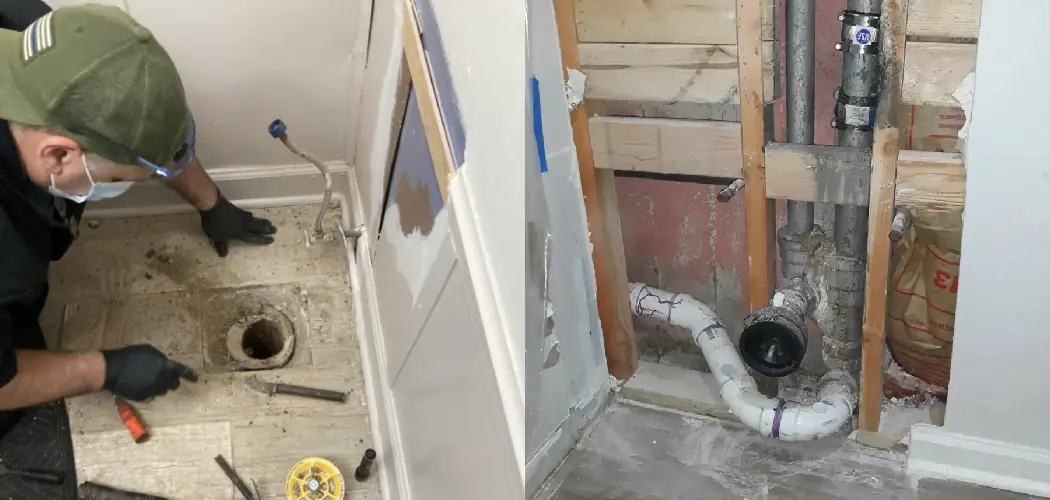Are you dealing with a sewage backup in your basement? If so, here are some tips to help you get it cleaned up and take steps to prevent it from happening again.
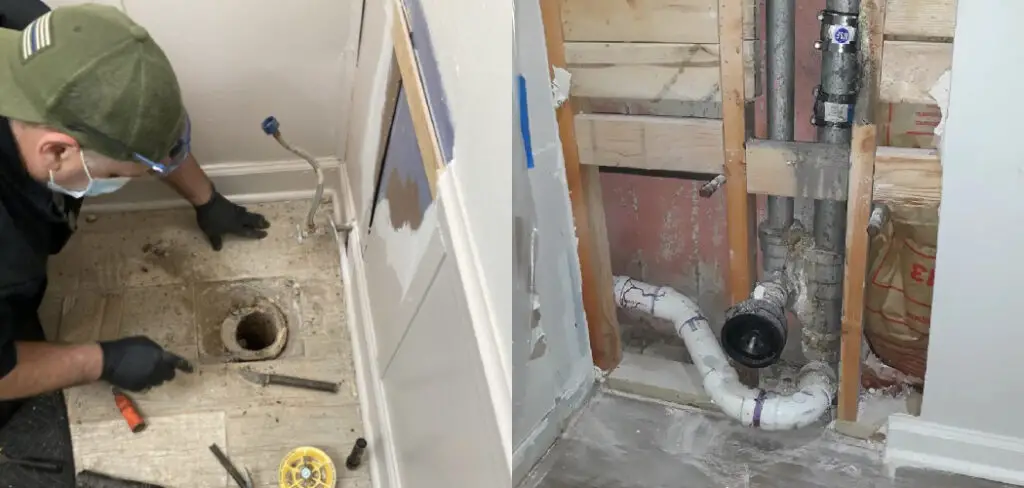
Living in a home with a basement comes with unique challenges, most notably the threat of flooding and sewage backup. In extreme cases where water backs up inside your pipes or if there’s an overflowing sewer system, the resulting wastewater can be disastrous for any homeowner. This excess moisture creates ideal conditions for mold growth and can damage walls, floors, and furnishings — leading to high repair costs.
Instead of letting this scenario play out though, having knowledge about stopping sewage backup in basements is essential for avoiding disruption and costly damages. Read on to learn how to stop sewage backup in basement!
What Will You Need?
In order to get the job done right, you’ll need some specialized equipment. These are the following:
- A sump pump
- Backup generator
- Plastic sheeting and heavy-duty plastic containers for the containment
- Rubber gloves, boots, and coveralls
- EPA-approved detergents and disinfectants
- An industrial vacuum cleaner
- Dehumidifier
Once you have all the necessary equipment, you’re ready to start the cleanup process!
10 Easy Steps on How to Stop Sewage Backup in Basement
Step 1. Turn Off Power and Water:
Make sure that all electrical sources are turned off in order to prevent shocks or fires. Then turn off the main water supply in order to avoid further water damage. Don’t forget to switch off the gas supply as well.
Step 2. Unplug Appliances:
Unplug all electrical appliances and move them away from affected areas. Cover the appliance with a plastic sheet to protect against contamination if it cannot be moved. Be careful to avoid contact with any water or sewage.
Step 3. Contain the Sewage Backup:
Before beginning to clean up sewage, it’s important that you contain the area in order to prevent contamination of other parts of your home or yard. Use heavy-duty plastic containers and plastic sheeting for this purpose, and make sure not to touch contaminated surfaces without using rubber gloves, boots, and coveralls first! If you come in contact with sewage, wash your skin thoroughly with soap and fresh water.
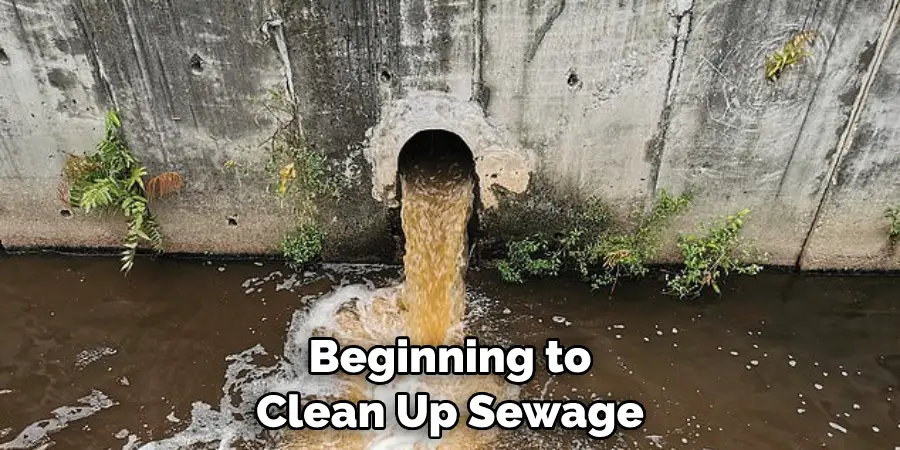
Step 4. Pump Out Excess Water:
Use a sump pump or backup generator to pump out excess water from your basement. This is a crucial step that needs to happen before you start cleaning up the mess! Additionally, you may want to consider installing a sump pump in your basement for future protection against flooding.
Step 5. Clean Up Sewage:
Once the area has been pumped out, use EPA-approved detergents and disinfectants to clean up all contaminated surfaces – including walls, floors, and furniture. You can also use an industrial vacuum cleaner to get rid of water and sewage from carpets, fabric furniture, and other items. It’s important to remember that some items may need to be discarded due to contamination.
Step 6. Vacuum Contaminated Areas:
Using an industrial vacuum cleaner, suck up any remaining sewage residue and dispose of it properly in a sanitary landfill or other designated location. Ensure all the contaminated materials are safely disposed of and that no further contamination occurs. As an added precaution, use disinfectants to prevent the spread of bacteria and other contaminants.
Step 7. Dry Out the Area:
Use dehumidifiers to remove excess moisture from your basement while also helping facilitate the evaporation of water left over from flooding. This should help to keep the area dry and prevent mold growth. If mold is already present, it’s important that you contact a professional to assess the situation and to clean and treat the affected area properly.
Step 8. Replace Damaged Materials:
Inspect the basement for any damaged materials, such as carpets, drywall, or insulation, that may need to be replaced due to contamination. Use caution when doing so, and make sure to dispose of any materials that have been affected properly. Moreover, make sure to double-check that all affected areas have been properly cleaned and disinfected.
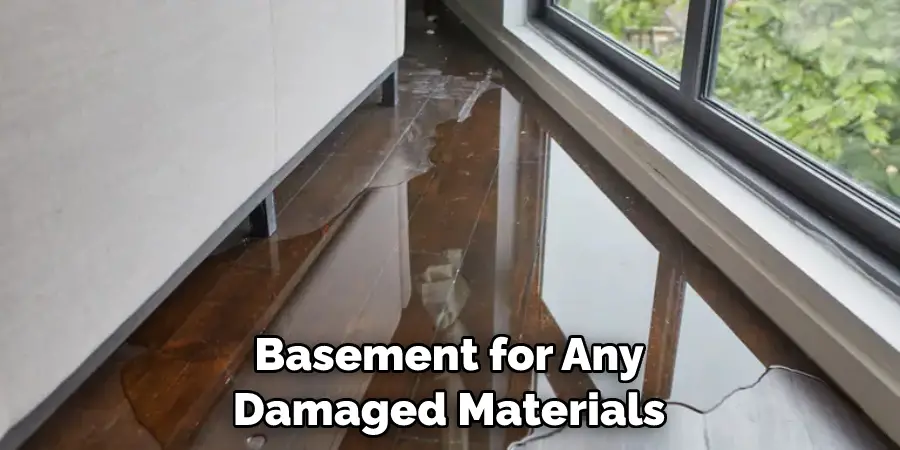
Step 9. Sanitize with Disinfectants:
After everything has been cleaned up and dried out, apply an EPA-approved disinfectant throughout the affected area in order to sanitize it and kill off any remaining bacteria or germs. Be careful to avoid contact with any treated surfaces until the product has been allowed to air dry.
Step 10. Monitor for Future Events:
Once everything has been cleaned up, it’s important to monitor your home for any future events of sewage backup. Have a plan in place so that if it does happen again, you’ll know exactly what steps to take. Remember to contact a professional if you ever need help with any part of the process.
By following these ten easy steps on how to stop sewage backup in the basement, you can help protect your home from the costly damages that a flooding event can cause. Make sure to have all the necessary equipment and materials on hand to prepare in case of an emergency!
5 Additional Tips and Tricks
- Ensure that all storm drains and sewer laterals are free of debris. Routinely check for clogged lines or roots growing into them and contact a professional if needed.
- Consider installing a backwater valve to stop the flow of sewage into your home in the event of a backup.
- Upgrade the existing plumbing system by replacing old pipes with new ones that are less likely to clog or break.
- Make sure all rainwater is directed away from your home’s foundation, such as via gutters and downspouts that move it away from your house’s walls and basement windows.
- Regularly inspect your home for potential causes of sewer backups, such as cracked foundations, leaky roofs, and faulty sump pumps – these can all be sources of water entering your basement that could potentially lead to a sewage backup problem.
Taking the time to perform regular inspections and preventive maintenance can help reduce the risk of sewage backup in your basement. Also, if a problem arises, contact a qualified professional for assistance. You can keep your home safe from sewage backups with the right preventive measures.
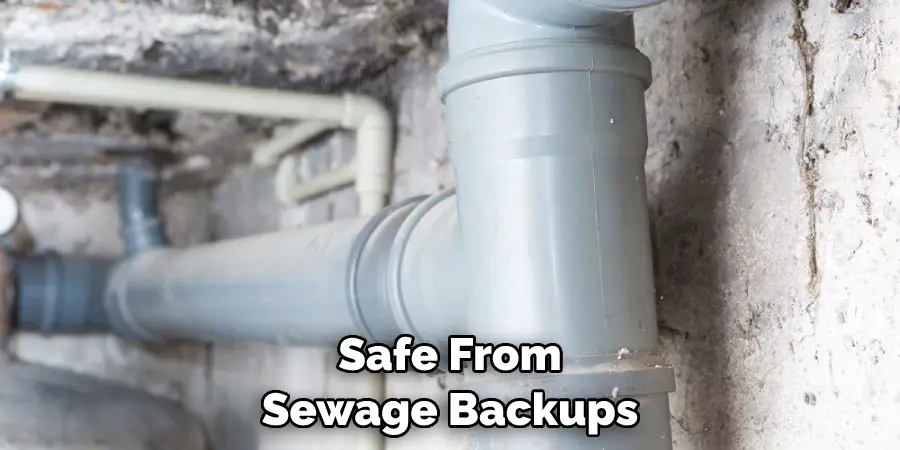
5 Things You Should Avoid
- Avoid Flushing Foreign Objects or Debris: This can lead to clogs and blockages in the plumbing.
- Avoid Pouring Fats, Oils, or Grease Down Drains: These materials can cause major blockages that could result in sewage backup.
- Avoid Connecting Sump Pumps Directly to Your Home’s Sewer System: Doing so increases the risk of backflow into your basement if there is a problem with the sewer line.
- Avoid Overloading Plumbing Fixtures: Too much water at once can overwhelm drain lines and cause backups in your basement.
- Avoid Using Chemical Cleaners: Avoid using chemical cleaners as they may damage pipes or corrode joints, eventually leading to leaky pipes and sewage backups in your basement.
By avoiding these practices and taking care of your home’s plumbing system, you can help prevent sewage backups. If a problem does arise, contact a qualified professional for assistance. You can keep your basement safe from sewage backups with the right preventive measures.
What Can I Use to Absorb Sewage?
In the event of a sewage backup, you can use absorbent materials to help remove standing water and reduce odors. These materials may include:
- Kitty litter to absorb liquid
- Towels or mop heads to absorb remaining water and dirt
- Disinfectant cleaners to help get rid of bacteria in your basement
- Air purifiers with activated carbon filters remove musty smells caused by mold or mildew
- Dehumidifiers reduce humidity levels which could lead to mold growth.

These solutions will help clean up and dry out the area after a sewage backup. Be sure to follow all safety precautions when cleaning up after a sewage spill, such as wearing protective clothing, gloves, and a face mask. Also, contact a professional for assistance if the problem cannot be resolved independently.
Conclusion
While sewage backup in the basement can certainly be a major inconvenience, there are several cost-effective and reliable solutions to prevent this from happening. From installing a surge protector to having sewer line access points inspected on the part of your property that is prone to flooding, these precautionary measures can ultimately save you time and money should your home experience any kind of water damage.
Additionally, basic maintenance such as clearing out floor drain traps, unclogging pipes, and checking for tears or splices in the line can help keep your plumbing system running smoothly. By considering all of the potential preventative steps discussed in this blog post, homeowners can stop sewage backup in basements before it occurs.
Hopefully, this blog post on how to stop sewage backup in basement has been a helpful guide for preventing and cleaning up after sewage backups. Remember, if you have any questions or need help resolving an issue with your plumbing system, contact a professional. You can keep your home safe from sewage backups with the right preventive measures.

